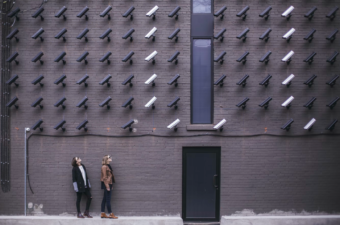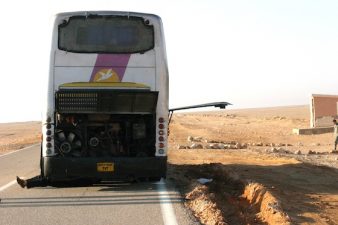 Tehran has bikes routes in place, but people aren’t using them because they’re needed in dense urban cores.
Tehran has bikes routes in place, but people aren’t using them because they’re needed in dense urban cores.
We all know about the importance of cycling for health and for creating sustainable cities and communities (like Vauban the German car-less city) that encourage carbon-free transport.
Traditionally Iranian cities have had a rich culture of bicycling in the first decades of the twentieth century. In Tehran and some other cities like Yazd and Esfahan with its beautiful bridge in center of Iran, many urban trails were made by bicycle.But this culture was weakened in the 50s and 60s when modernization became the base of governmental strategies in Iran in several fields like architecture, urban design, and urban transportation. The automobile became the main mode of transportation. The use of bikes died out.
This happened first in Tehran, then in other big cities. The situation was more complicated when small and medium-sized cities were affected by presence of automobile. Now Tehran is choking on car exhaust.
- Sustainable biking lost many users, who started to use cars instead of bicycle. Nowadays, Iranians do not use bicycle as a main transportation mode. In absence of reliable data, it is not so obvious how many urban travels are made by bicycle. Such data is really rare.
- In the municipality of Mashad, the second big city of Iran in north east, they say that 5 percent of the urban travels of the city are made by bicycle. This data looks very optimistic for this city, which has a population of less than 2.5 million people.
- But what’s the problem? Why don’t more people in Iran get on bikes?


 Although the planners usually emphasize the necessity of bicycle planning, particularly in the historical core of the cities, it is hard to find suitable space for this planning in the dense urban fabric of the greater cities.
Although the planners usually emphasize the necessity of bicycle planning, particularly in the historical core of the cities, it is hard to find suitable space for this planning in the dense urban fabric of the greater cities.
Of course some suggestions have been made for developing bicycle routes and facilities in central part of Tehran like the one presented by Dr. Fereidoun Gharib from the University of Tehran in 2004. These suggestions have not been executed yet.
Most of the developed plans are located in east and west of Tehran (see above), which have less density and population in comparison with the center of the city. At present 8 from the 22 zones of Greater Tehran Area have bicycle routes. According to Jafar Tashakkori Hashemi, the deputy mayor of Tehran, there are 150 km of bike routes in the city, which 60 km of it are in Zone 8 in east of Tehran.
It seems that this is possible to encourage people to bike more by developing attractive and safe bicycle routes in dense urban cores. This is especially possible in the neighborhood scale. So what are you waiting for Iranians? Get on your bikes. Or eco-tourists to the region – show Iran how it’s done by bike.
Read more on green Iran:
Iran Looks to Create Biofuel
Iran Inaugurates Its First Solar CSP Plant
Celebrate Spring and Iranian New YearImage via kamshots



